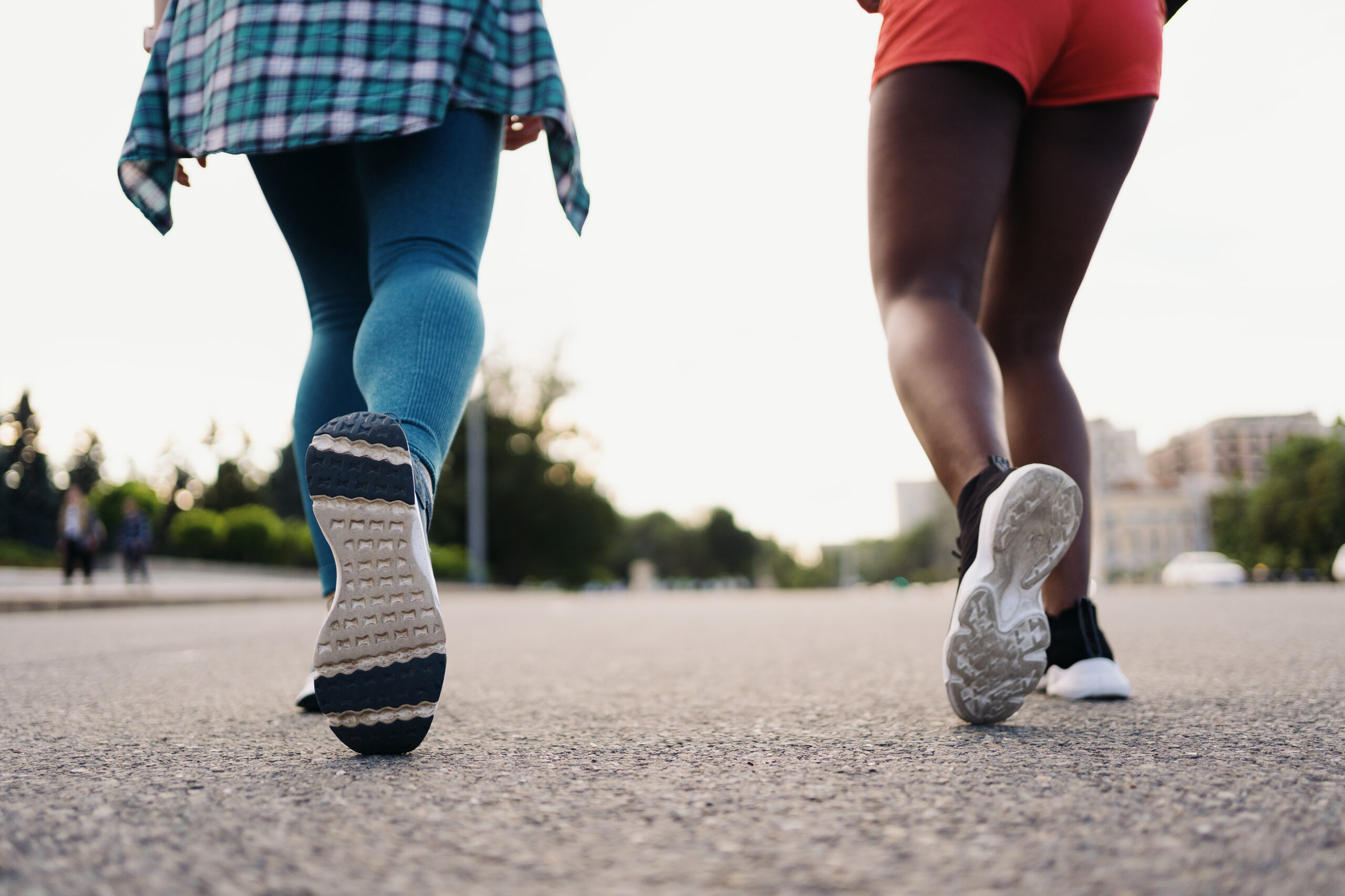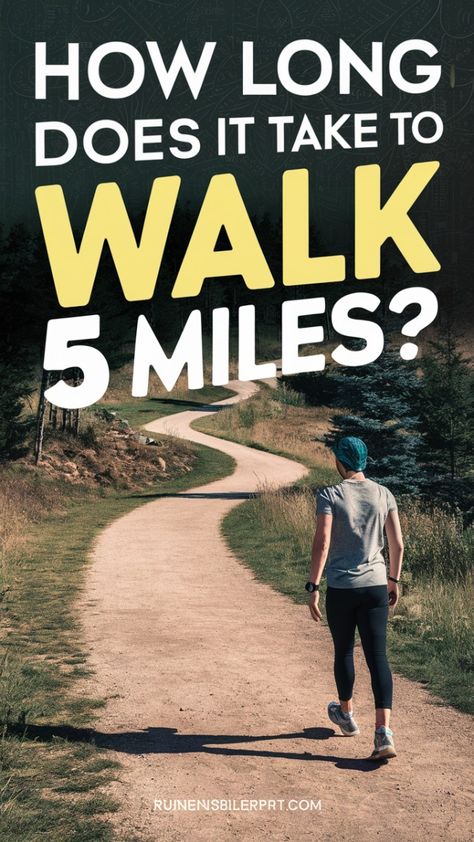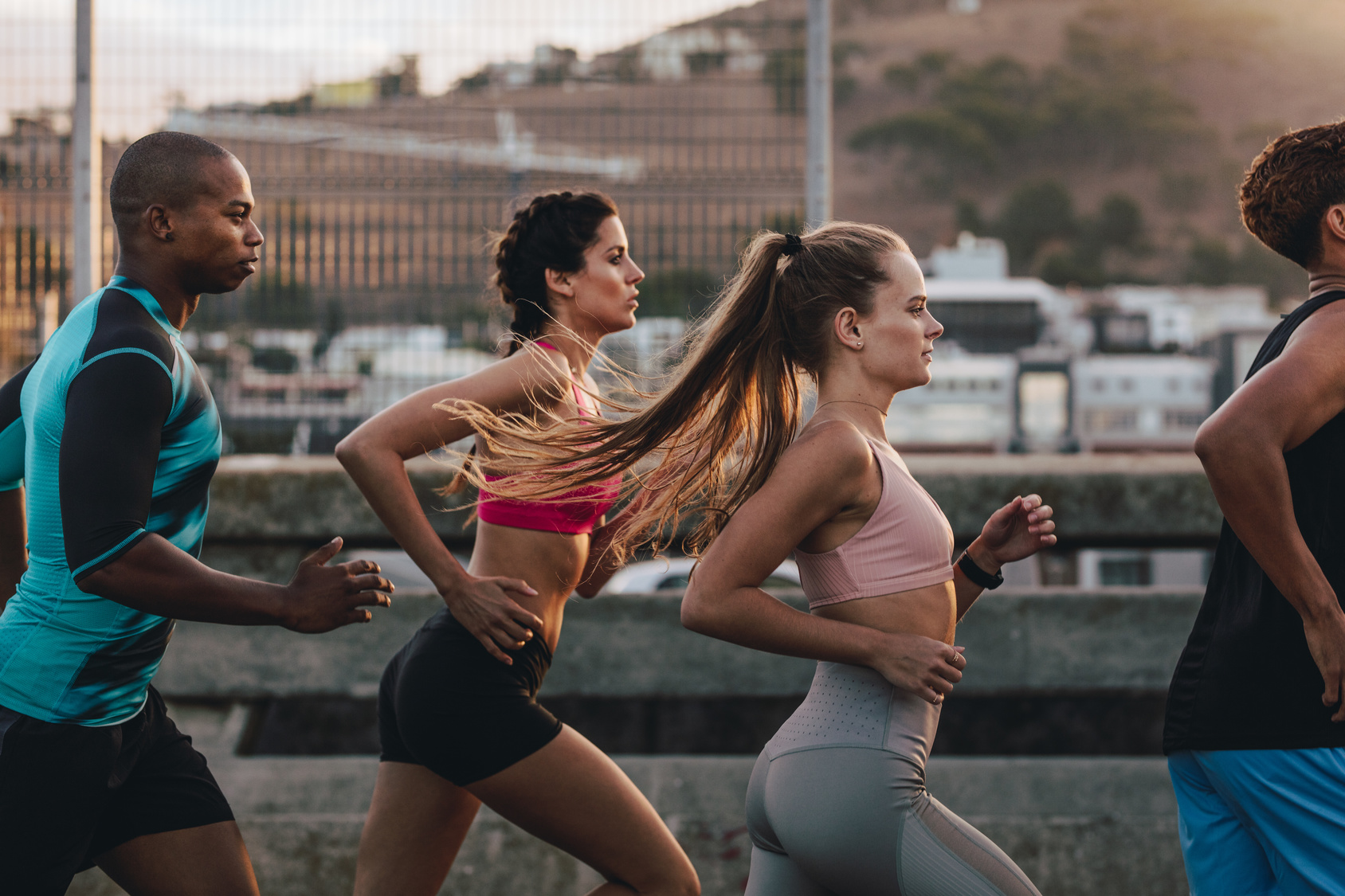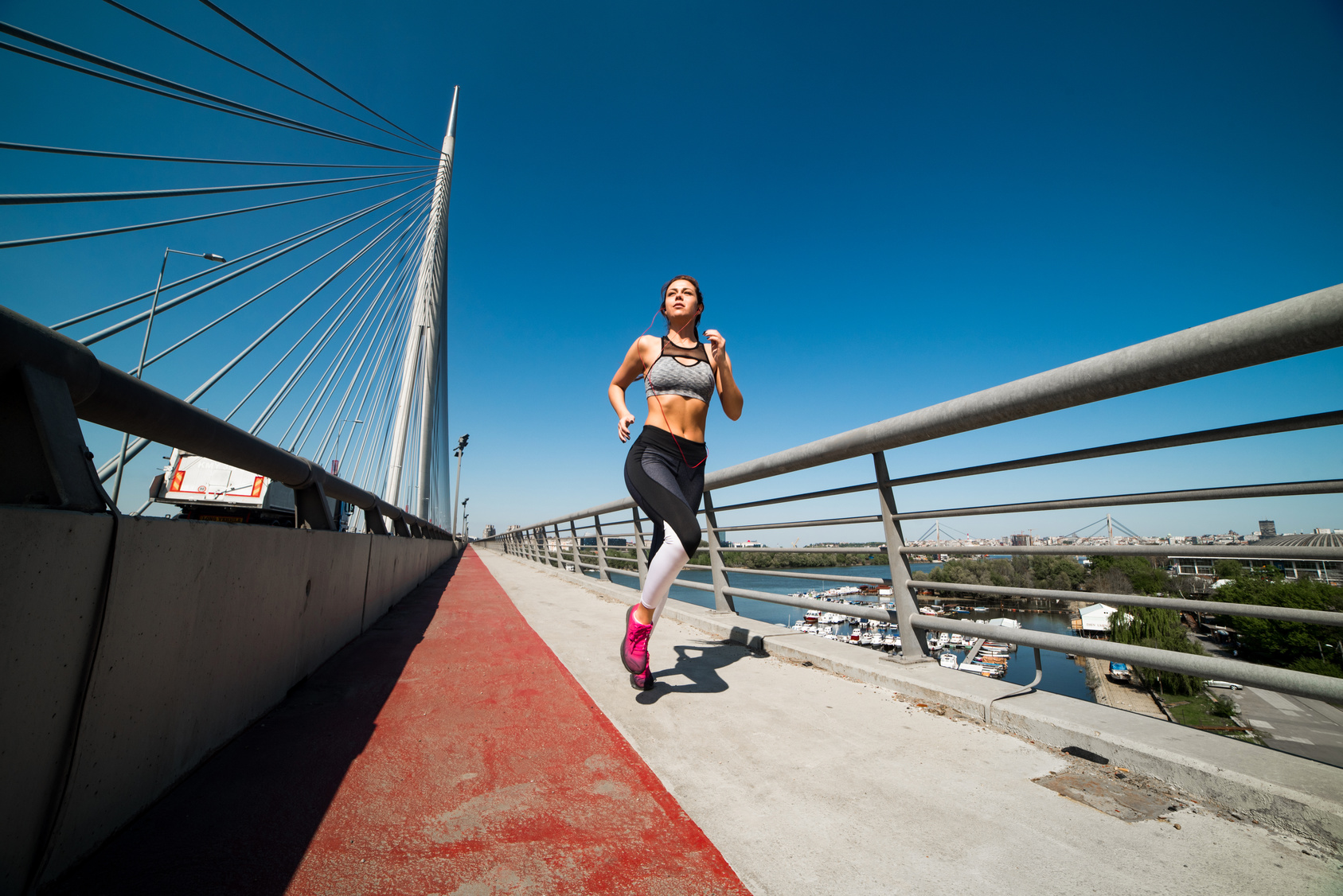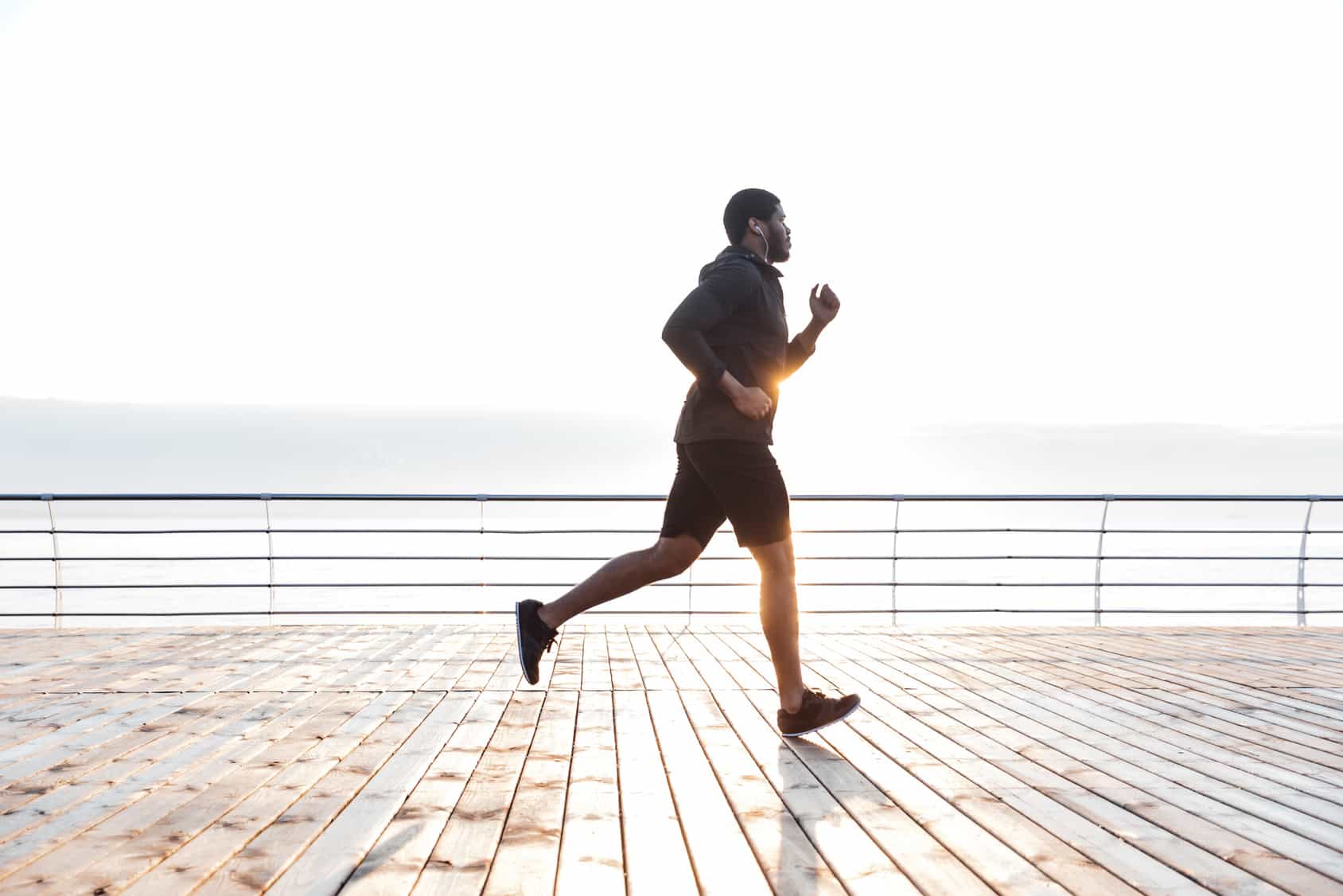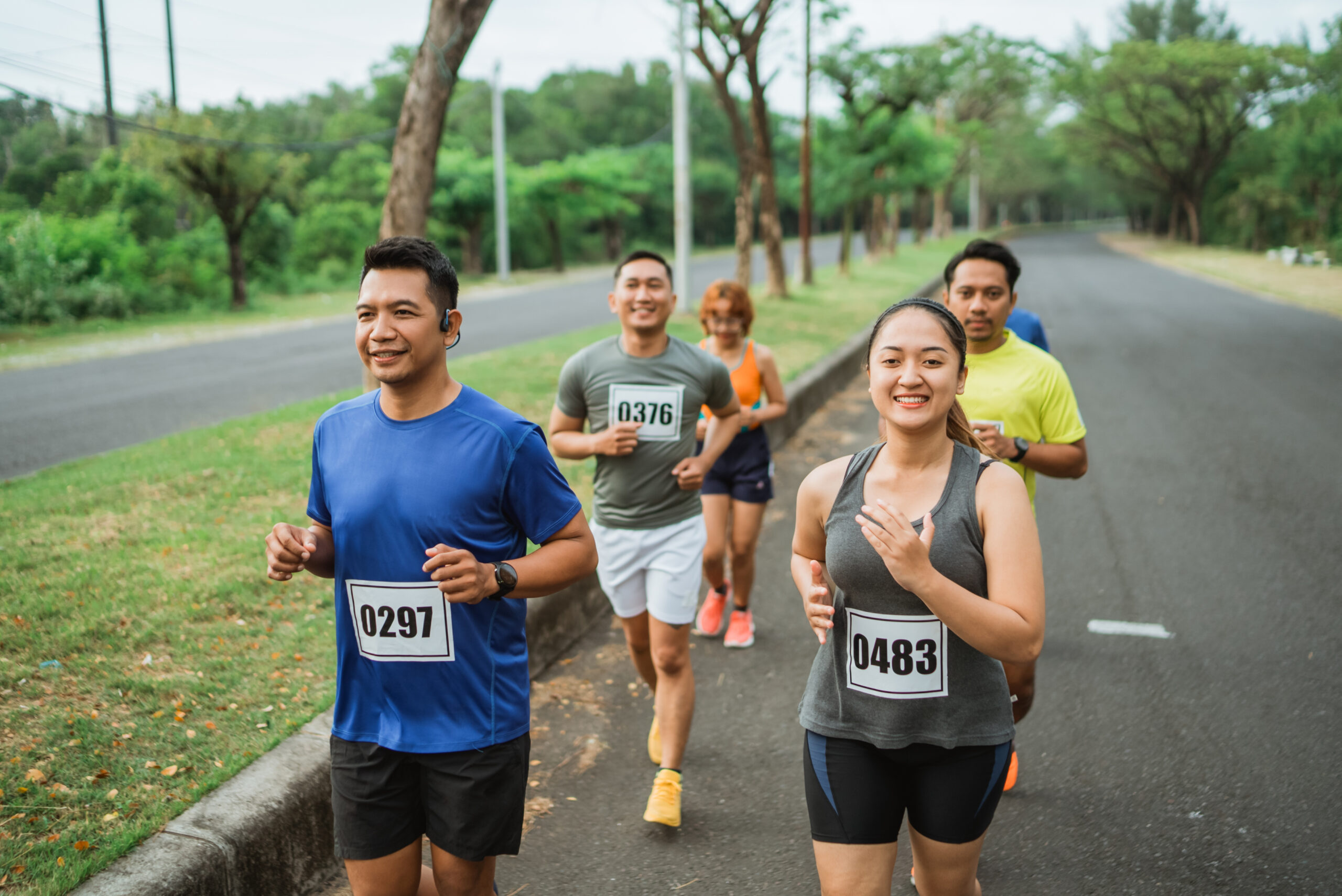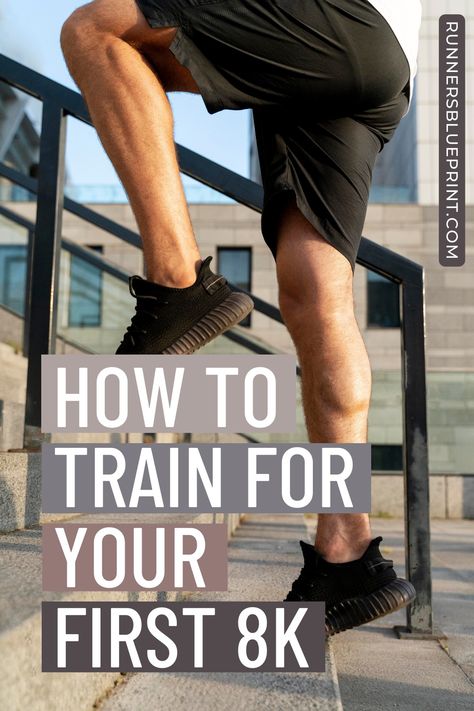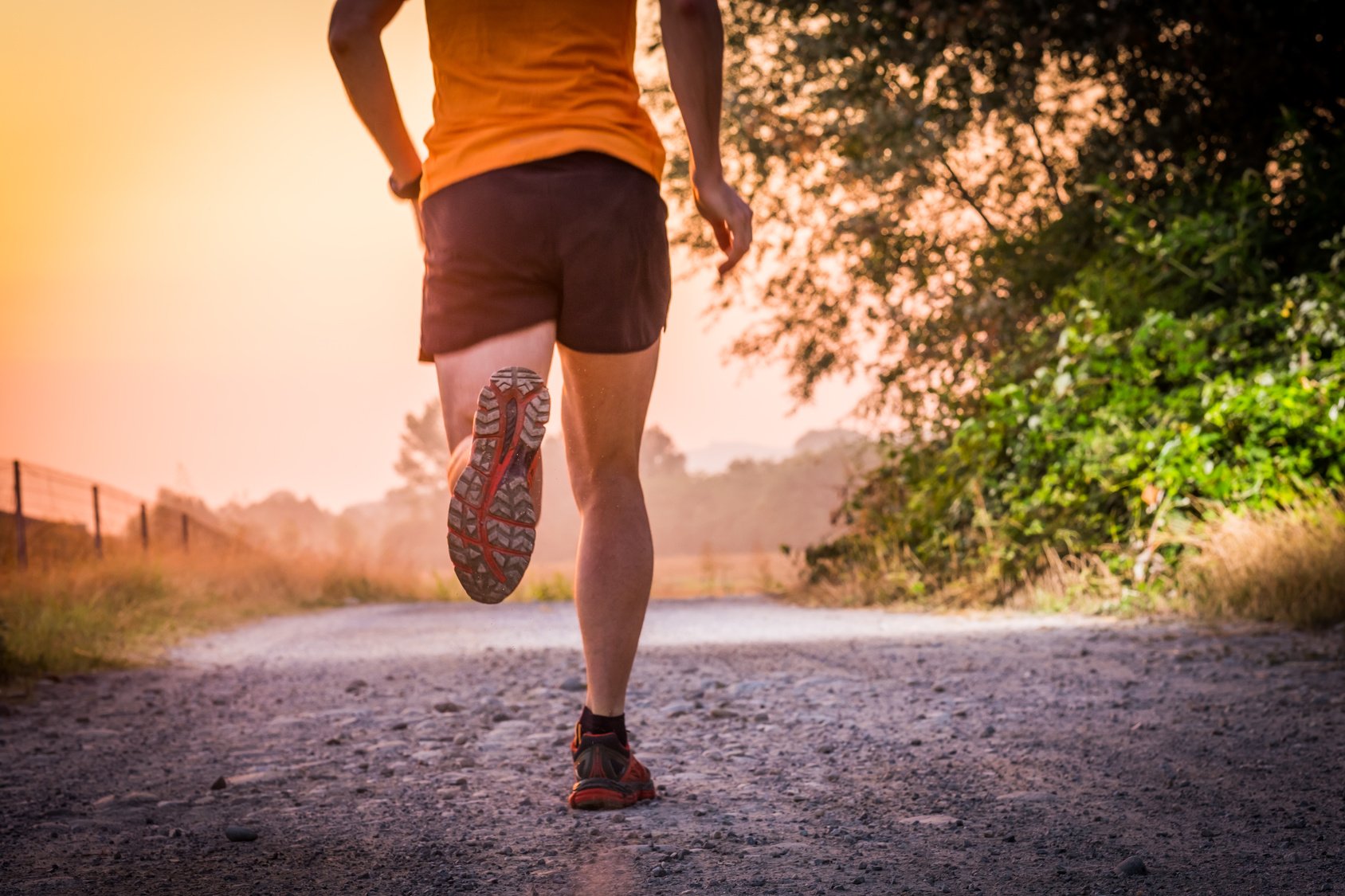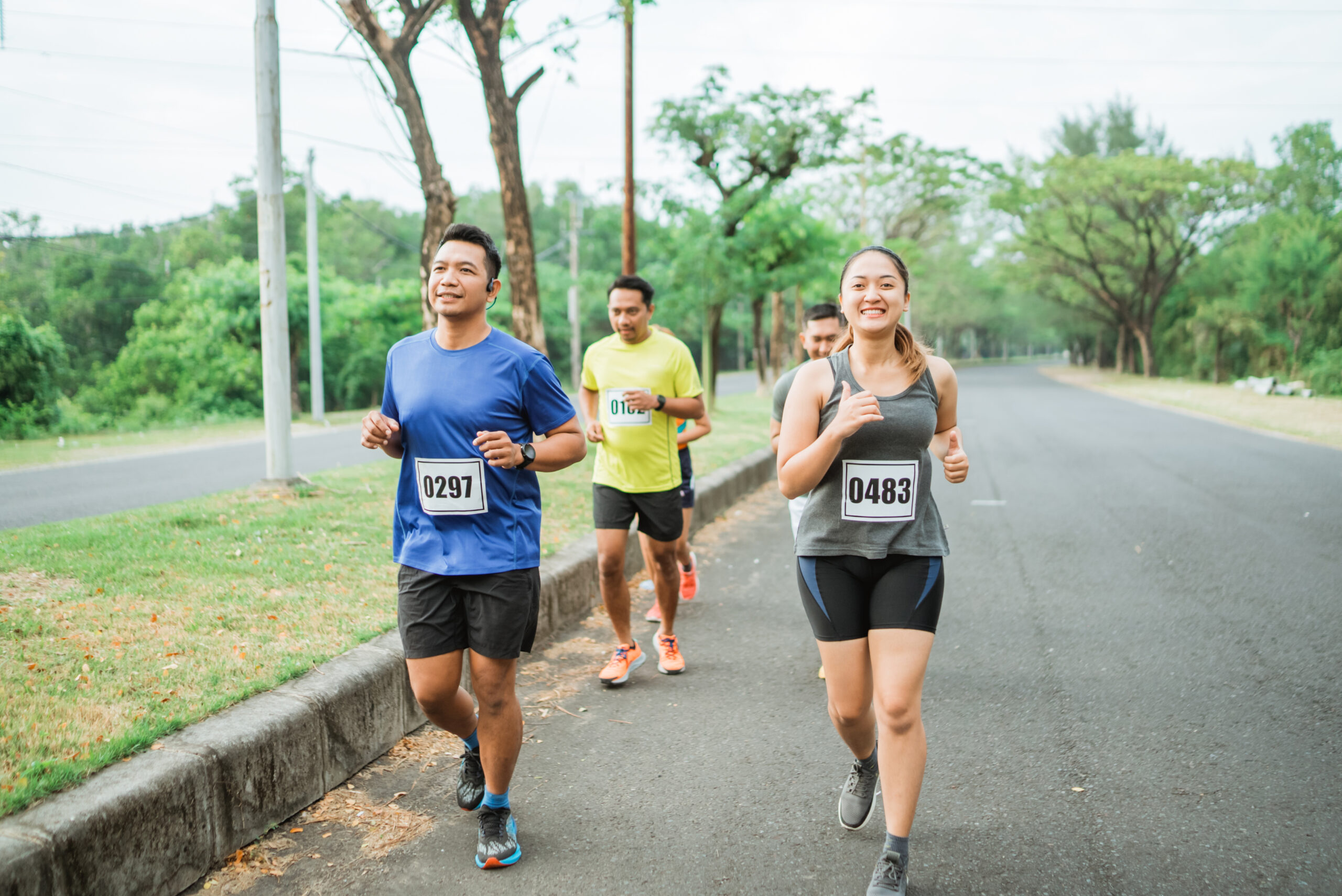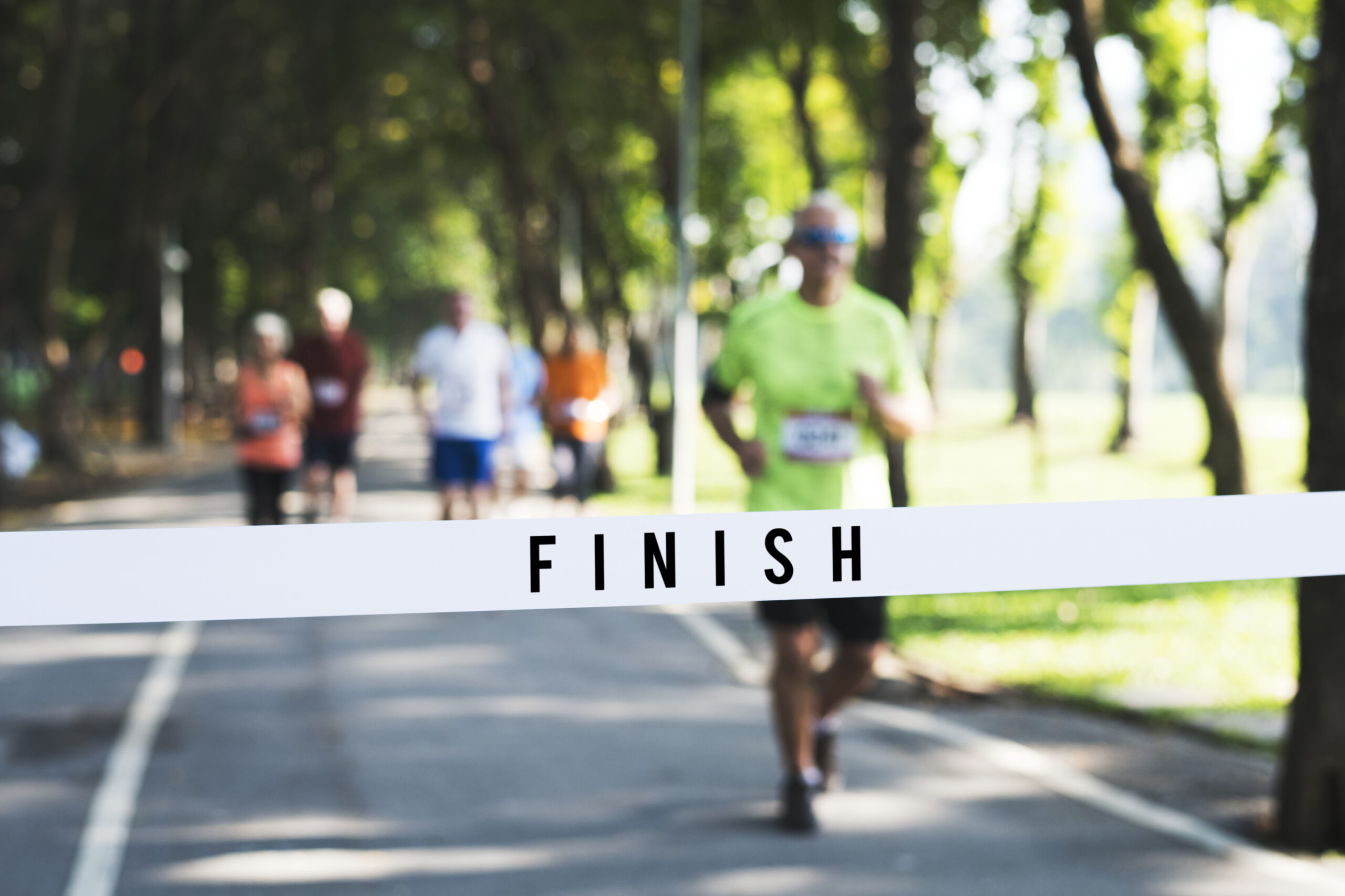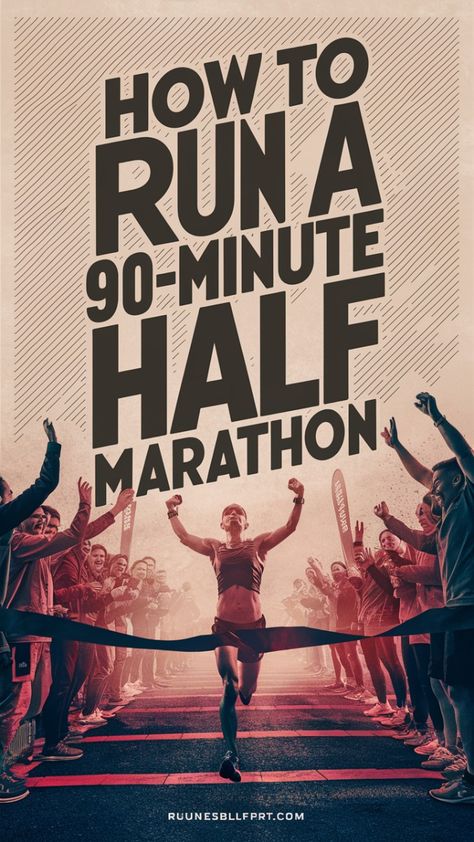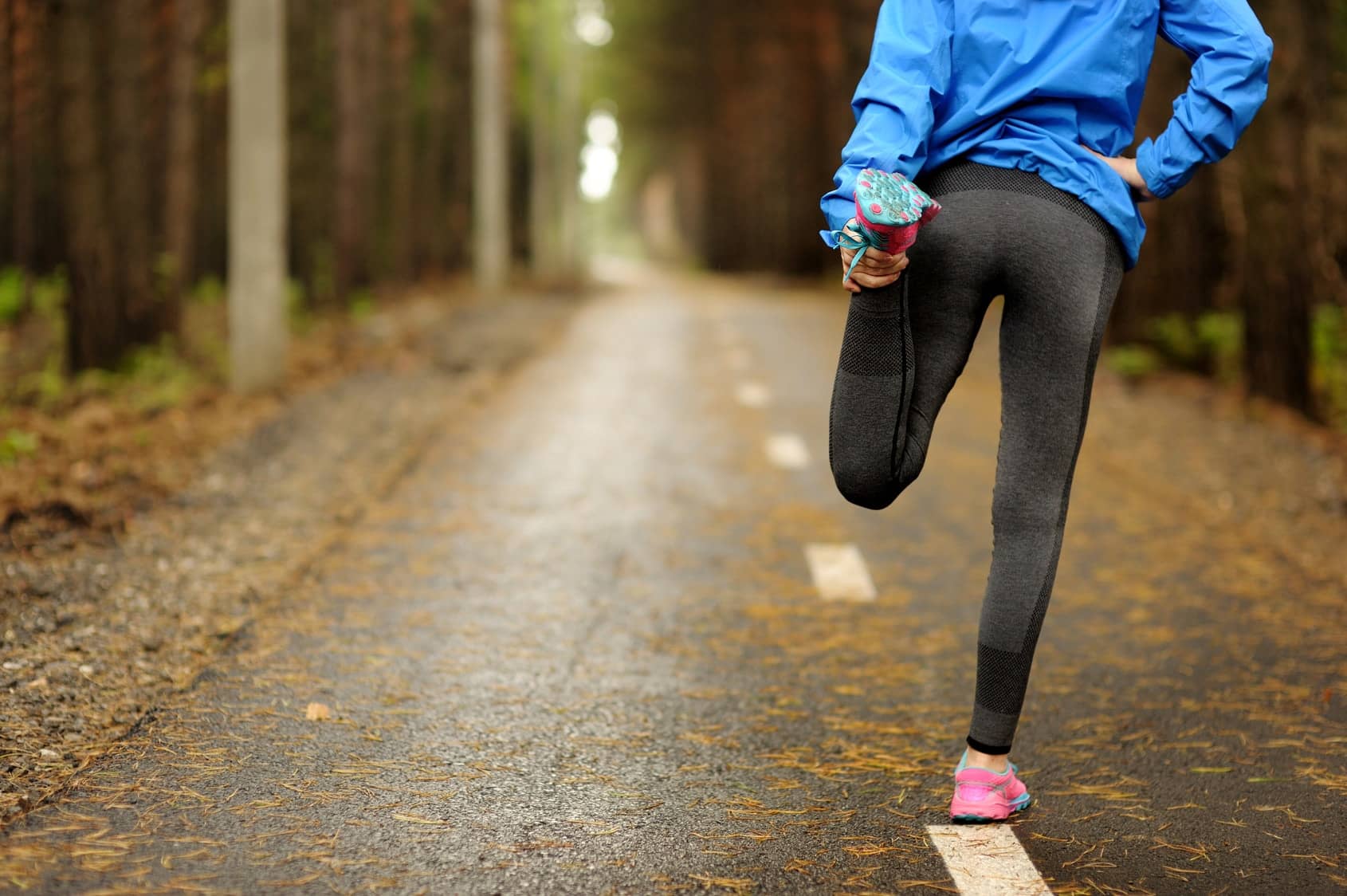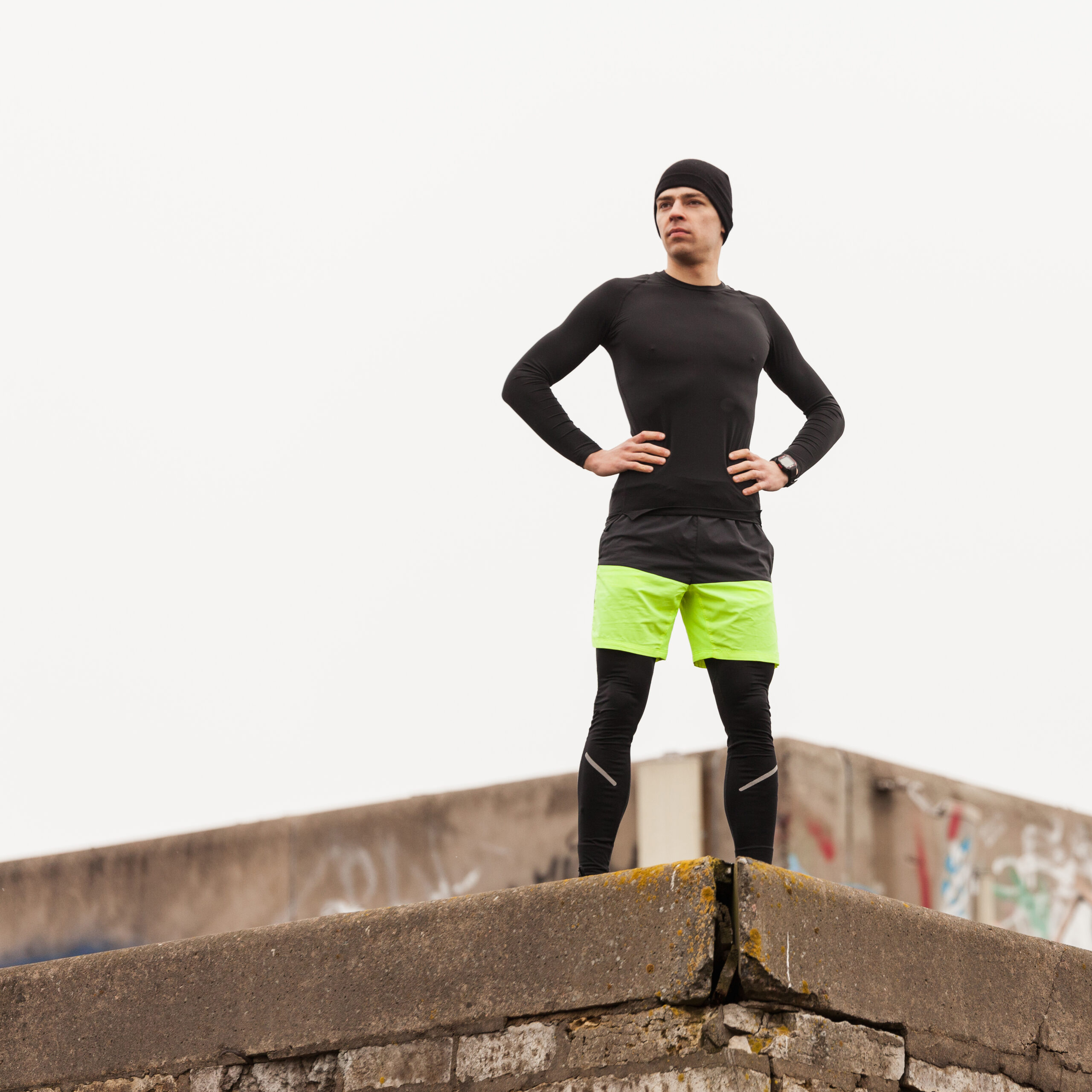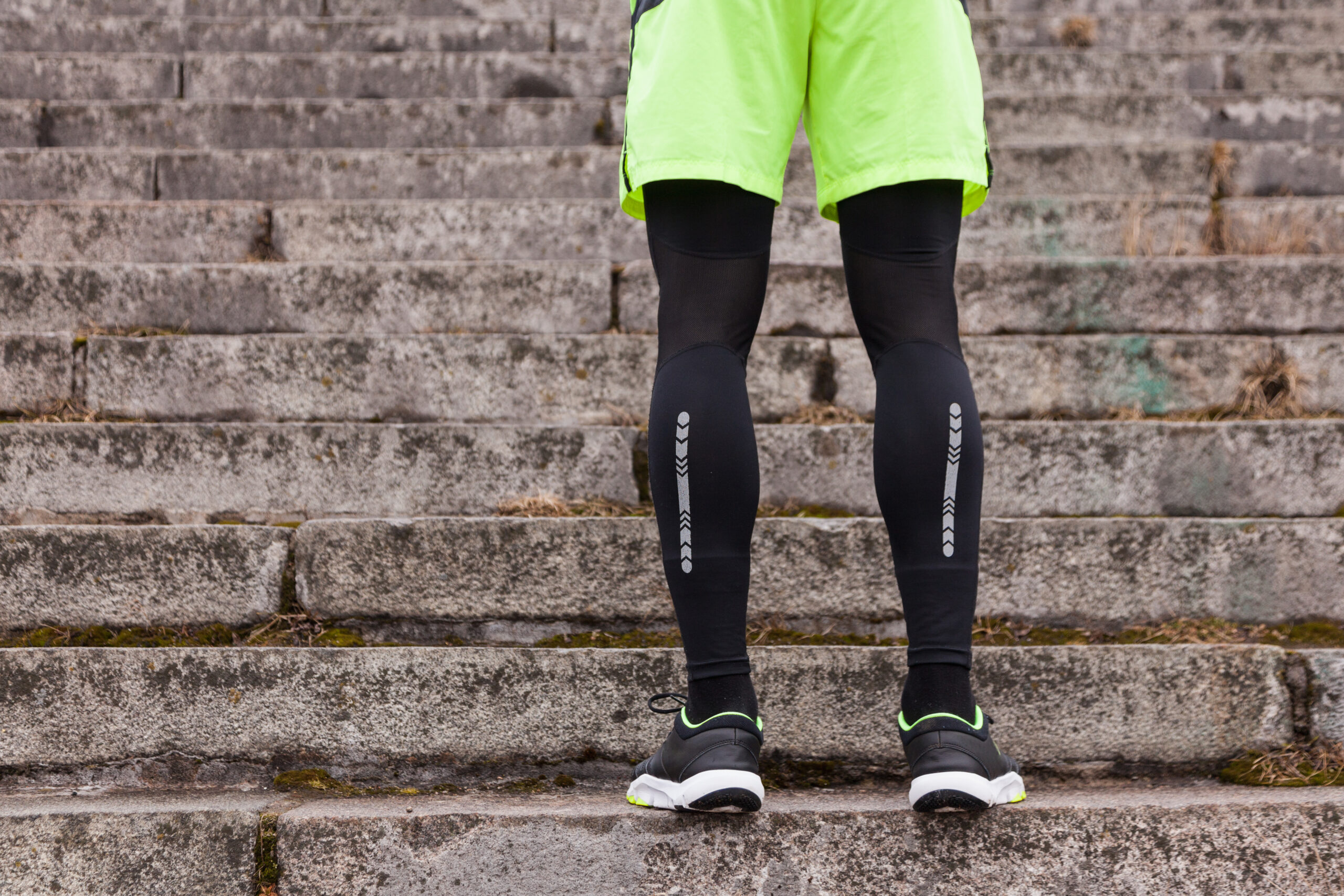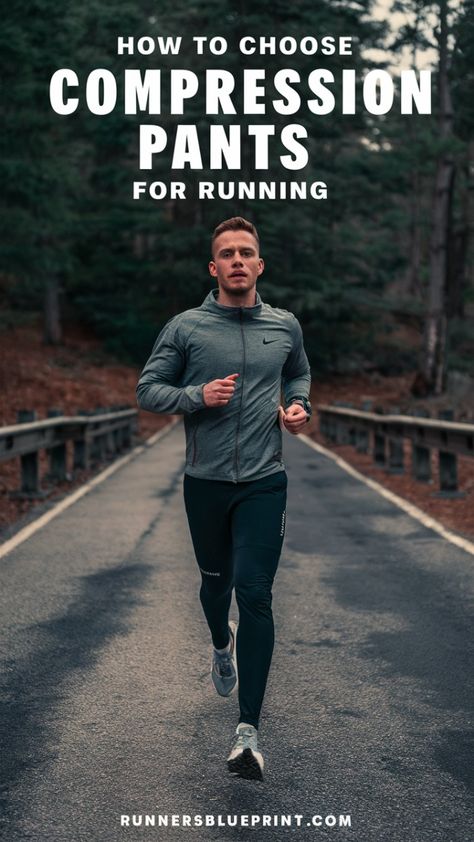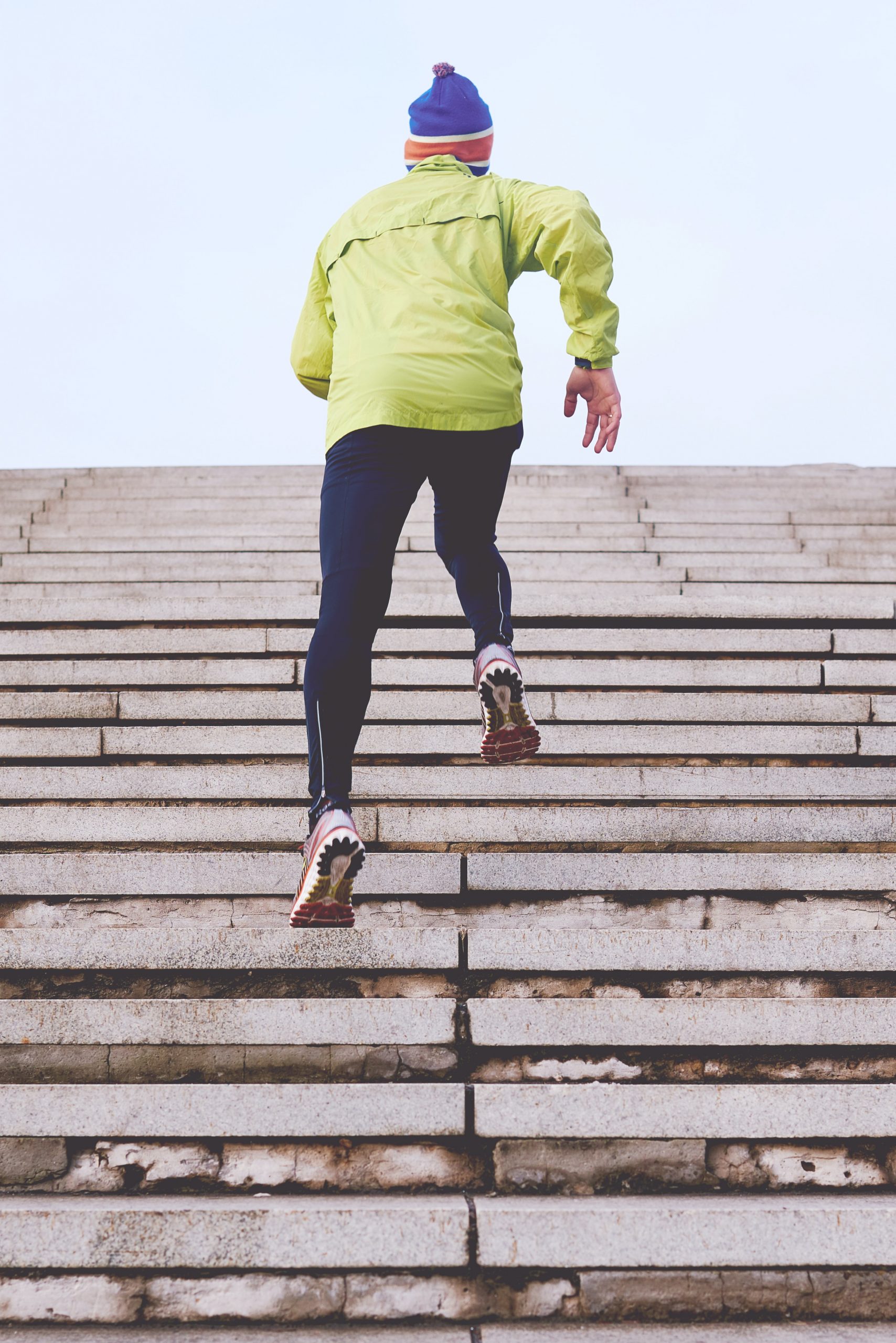Hitting a sub-90 half marathon is tough—it’s the kind of goal that challenges both your body and mind.
The good news? With the right approach, it’s totally doable.
I remember my first attempt at a sub-90 half. The first few miles felt like a breeze, but by mile 8, my legs were screaming. What helped me push through was breaking the race into smaller, manageable segments.
What’s more?
Having coached numerous runners to this goal and raced it myself, I can attest to having a solid base—such as a sub-40 minute 10K or a sub-20 minute 5K—before embarking on this challenging endeavor.
Whether you’re experienced or aiming for this goal for the first time, let’s dive into the strategies that can get you there.
Here’s the Pace You’ll Need for a 1:30 HM
To go sub-90, you’re looking at a pace of 6:50 per mile (or 4:15 per kilometer).
It’s a fast pace, and there’s no sugar-coating it—this goal requires dedication. Ideally, you should already be running strong in shorter races, like a sub-18 5K, sub-40 10K, or a sub-3:15 marathon. These times give you a solid foundation for stepping up to a sub-90-minute half.
The Requirements Of Running A 1.30 Half Marathon
First off, a sub-90 half marathon takes more than just showing up on race day and giving it your all. It calls for preparation, consistency, and dedication.
If you’re already an experienced runner and have completed several races before, you’re on the right track. However, if you’re a beginner runner, don’t be discouraged. You can work towards achieving this goal with the right training plan and attitude.
I’d recommend completing a half marathon in or around the 110-minute mark to give yourself the best chance at success.
With that, you’ve got a solid base to build on and work toward a faster pace. If you can run a 10K within 40 to 42 minutes, you’re on the right track to achieving your sub-90-minute goal.
A beginner? Start here.
How to Train for a Sub-90 Half Marathon
The key to nailing a 1:30 half lies in your training details.. You can’t just wing it and hope for the best on race day.
You need to structure your runs with a blend of easy, speedwork, tempo, and long runs. And don’t forget cross-training—it’s essential to keeping your body balanced and injury-free.
Easy Runs
These are the backbone of your training. They should feel comfortable, almost too easy, with no pressure on pace. The goal here is to build aerobic endurance. You’re in the right zone if you can hold a conversation while running.
To err on caution, I recommend using a heart rate monitor. Your target zone should be around 65 and 75 of your maximum heart rate.
Interval Training
If you want to run fast, it helps to train at your goal pace—or even a bit quicker—once a week. This is where interval training comes in, which consists of running one fast interval followed by one slow interval.
Then you repeat for the duration of the session. Interval training is the best way to improve your speed when training for a half marathon. Speedwork also trains your body to tap into more muscle power as you run.
My 1.30 HM training plan includes various interval work, ranging from 400-meter to 2Km intervals. The intervals should be performed as instructed in the plan. For shorter repeats like 400 and 800, I recommend doing them on a track, but for longer repeats, you might want to do them on the road.
Here’s the break-down:
- 400m reps: Run at a 6:00/mile pace with 60-second recovery.
- 800m reps: Shoot for a 6:20/mile pace with a 90-second recovery.
- 1K reps: Aim for a 6:40/mile pace with a 2-minute recovery.
- 2K reps: Hold 6:50/mile pace with 2-minute recovery.
Tempo Runs
Tempo runs consist of non-stop sessions with a build-up halfway to a 10K race pace, and they’ve a lot to offer.
Tempo runs are fantastic strength builders and are a must, especially when training for a half marathon. They also help keep pace without building too much lactate in your muscles, which eventually helps keep a faster pace for a longer period.
The typical tempo runs would start with 10 to 15 minutes of easy running, then speed up gradually for 20 to 30 minutes near the midpoint, then 5 to 10 minutes easy as a cool-down toward the end.
That’s all.
I’d also recommend performing tempo workouts at your target half-marathon pace, 5:50 per mile. Build up the speed gradually, not suddenly.

Long Runs
Taking on the 90-minute half marathon means that you likely already do a long run of roughly 90 minutes or longer every weekend.
If that’s the case, then I’m not surprised.
Long runs are the core of building endurance.
They’re the best for building aerobic endurance.
But how do you increase distance without incurring injury?
The key is to do it gradually. As a rule, build up the distance of your long runs gradually. Following the 10 percent rule is the best way to go.
During the program, you’ll add 1-2 miles to your long run every 1-2 weeks. You’ll also be taking a recovery week every 4 to 5 weeks, reducing the long run distance by 30 percent.
To complete a sub-90-minute half marathon, you’ll want to run more than 13.1 miles during your long peak runs—4 to 6 weeks before race day.
Don’t try to run these sessions too fast. Focus on spending more time on your feet. Time over distance
Warm-Up and Recovery
Warming up properly is crucial for peak performance and injury prevention. Start with a 10-15 minute jog for speedwork, followed by dynamic stretches like leg swings and lunges. Finish with a few 100-meter strides at near race pace. For long runs, you can start slow and use the first few miles as a warm-up.
Don’t forget to stretch after your runs. And always listen to your body—rest is just as important as the hard work you’re putting in.
Race Day Pacing Strategy
One effective strategy is to divide the race into smaller segments and pace accordingly.
For example, try breaking down the race into three 4-mile segments with a final 5.1-mile stretch
During the first two segments, aim to run slightly slower than your goal pace.
In the third segment, aim to run at your goal pace. Finally, during the last segment, aim to slightly increase your pace.
What’s more?
Adjust your pacing based on course elevation, weather conditions, and fitness level.
Weekly Mileage
One of the keys to success is gradually building up your weekly mileage. There’s no magic number, but it’ll take serious work to reach sub-90e.
If you’re running around 20 miles per week, don’t worry, you can still get there! Aim to gradually increase your weekly mileage to around 40 miles throughout the early weeks of your training.
But it’s not just about running more miles. You also need to be smart about how you structure your training. Keep your long run mileage to around 25-35% of your weekly volume.
For example, if you’re running 26 miles a week, aim for a long run of around 6-9 miles. Going too hard or fast can lead to injuries that only set you back in training.
As you build your weekly mileage, be sure to also focus on cross-training and strength training to prevent injury and build overall body strength.
A strong body is resilient, and you’ll be better able to handle the rigors of training if you’re doing push-ups, pull-ups, lunges, and other compound movements.
Your Training Plan for a 1:30 Half Marathon
Now, onto the training plan. This is just a guide, so feel free to adjust it to fit your schedule and needs. But remember, consistency is key. You won’t get to the finish line in under 90 minutes if you’re not putting in the work.
This plan includes a mix of easy runs, speed work, and a long run each week to help you build endurance and speed.
Week – 1
- Monday – Rest Day or Cross train
- Tuesday – Easy Run: 4 miles
- Wednesday—Speedwork: 6 X 800M
- Thursday– Easy Run: 4 miles
- Friday—Rest Day or Cross train
- Saturday– Steady Run: 4 miles
- Sunday – Long Run: 10 miles
Week – 2
- Monday – Rest Day or Cross train
- Tuesday – Easy Run: 5 miles
- Wednesday—Speedwork: 10 X 400M
- Thursday– Easy Run: 5 miles
- Friday—Rest Day or Cross train
- Saturday– Steady Run: 6 miles
- Sunday – Long Run: 10 miles
Week – 3
- Monday – Rest Day or Cross train
- Tuesday – Easy Run: 5 miles
- Wednesday—Speedwork: 5 X 1K
- Thursday– Easy Run: 6 miles
- Friday—Rest Day or Cross train
- Saturday– Steady Run: 4 miles on hills
- Sunday – Long Run: 11 miles
Week – 4
- Monday – Rest Day or Cross train
- Tuesday – Easy Run: 6 miles
- Wednesday—Speedwork: 4 X 2K
- Thursday– Easy Run: 4 miles
- Friday—Rest Day or Cross train
- Saturday– Tempo Run: 4 miles
- Sunday – Long Run: 12 miles
Week – 5
- Monday – Rest Day or Cross train
- Tuesday – Easy Run: 7 miles
- Wednesday—Speedwork: 12 X 400M
- Thursday– Easy Run: 5 miles
- Friday—Rest Day or Cross train
- Saturday– Steady Run: 6 miles
- Sunday – Long Run: 13 miles
Week – 6
- Monday – Rest Day or Cross train
- Tuesday – Easy Run: 7 miles
- Wednesday—tempo run: 5 miles
- Thursday– Easy Run: 5 miles
- Friday—Rest Day or Cross train
- Saturday– Steady Run: 7 miles
- Sunday – Long Run: 13 miles
Week – 7
- Monday – Rest Day or Cross train
- Tuesday – Easy Run: 7 miles
- Wednesday—Speedwork: 8 X 800M
- Thursday– Easy Run: 6 miles
- Friday—Rest Day or Cross train
- Saturday– tempo Run: 6 miles
- Sunday – Long Run: 14 miles
Week – 8
- Monday – Rest Day or Cross train
- Tuesday – Easy Run: 7 miles
- Wednesday—Speedwork: 8 X 1K
- Thursday– Easy Run: 7 miles
- Friday—Rest Day or Cross train
- Saturday– Tempo Run: 6 miles
- Sunday – Long Run: 14 miles
Week – 9
- Monday – Rest Day or Cross train
- Tuesday – Easy Run: 7 miles
- Wednesday—Speedwork: 5 X 2K
- Thursday– Easy Run: 8 miles
- Friday—Rest Day or Cross train
- Saturday– Tempo Run: 7 miles
- Sunday – Long Run: 15 miles
Week – 10
- Monday – Rest Day or Cross train
- Tuesday – Easy Run: 7 miles
- Wednesday—Speedwork: 12 X 400M
- Thursday– Easy Run: 7 miles
- Friday—Rest Day or Cross train
- Saturday– Steady Run: 7 miles
- Sunday – Long Run: 15 miles
Week – 11
- Monday – Rest Day or Cross train
- Tuesday – Easy Run: 5 miles
- Wednesday—Speedwork: 10 X 1K
- Thursday– Easy Run: 6 miles
- Friday—Rest Day or Cross train
- Saturday– Tempo Run: 6 miles
- Sunday – Long Run: 10 miles
Week – 12
- Monday – Rest Day or Cross train
- Tuesday – Easy Run: 4 miles
- Wednesday—Speedwork: 8 X 400M
- Thursday– Easy Run: 3 miles
- Friday—Rest Day or Cross train
- Saturday– Steady Run: 3 miles
- Sunday – Half Marathon Race Day

Frequently Asked Questions
I know that you have more than one question about running a fast half marathon. Let me address some of the most common ones:
How many times a week should I train to run a sub-1:30 half marathon?
Most runners aiming for a sub-1:30 half marathon benefit from 4 to 5 training sessions per week. A typical weekly plan includes:
- 1 long run to build endurance.
- 1-2 speed workouts (e.g., intervals or tempo runs) to improve pace and lactate threshold.
- 1-2 easy recovery runs to aid in active recovery and mileage building.
Consistency is key, but don’t underestimate the value of recovery days—your body needs time to adapt and grow stronger from training.
How long does it take to prepare for a sub-1:30 half marathon?
For most runners, a dedicated 12-16 week training plan provides enough time to build the required speed, stamina, and endurance. However, this can vary depending on your current fitness level and running background. Starting with a solid base of regular running (about 25-30 miles per week) before beginning the specific training plan can help make the transition smoother.
Is strength training necessary for a sub-1:30 half marathon?
Yes, adding strength training into your routine can improve running efficiency, reduce injury risk, and support faster paces. Focus on exercises that strengthen your core, glutes, and legs, like squats, lunges, and planks. Aim for 1-2 sessions per week, keeping them lighter as race day approaches to avoid fatigue.
What is the best way to pace myself during a half marathon?
Pacing is key to hitting your target time without burning out. Start slightly slower than your target pace for the first mile to ease into the race, then settle into your goal pace (around 6:52 per mile for a sub-1:30). Try to run a consistent pace and save a little energy for the last few miles. Many runners find it helpful to use a GPS watch to monitor their pace or practice even splits during training.
How do I avoid burnout during training?
To prevent burnout, prioritize recovery just as much as your hard training days. Include rest days and easy runs in your plan to give your body time to recover. Cross-training (like cycling or swimming) can also provide variety while reducing the impact on your joints. Finally, listen to your body—if you’re feeling consistently fatigued, don’t hesitate to take an extra rest day.
What should I eat before a long training run?
Fueling before a long run is essential for sustained energy. Aim for a balanced meal about 2-3 hours before your run, focusing on easy-to-digest carbs with a bit of protein. Good options include oatmeal with banana, a bagel with peanut butter, or a smoothie with fruit and yogurt. Avoid high-fiber or greasy foods to minimize digestive issues. During the run, consider bringing a sports drink or energy gels if you’re going longer than an hour.
Quick Summary: Core Points to Achieve a Sub-1:30 Half Marathon
To break the 1:30 mark in a half marathon, focus on these essential strategies:
- Target Pace: Aim for an average pace of 6:52 per mile (or 4:16 per kilometer) to hit a sub-1:30 finish.
- Weekly Mileage: Build up to 35-50 miles per week to strengthen endurance and prepare your body for race demands.
- Key Workouts:
- Tempo Runs: Run at a pace of 7:00-7:10 per mile to improve your ability to sustain high-intensity effort.
- Intervals: Include speed intervals (e.g., 800m repeats at 6:30-6:40 per mile) to build speed and stamina.
- Long Runs: Increase endurance with weekly long runs at a comfortable pace (8:00-8:30 per mile).
- Strength Training: Add 1-2 strength sessions per week to improve stability, prevent injuries, and support faster running.
- Consistency and Recovery: Train consistently with 4-5 runs per week, and prioritize recovery to avoid overtraining and stay strong throughout your training cycle.
Please share this checklist on social media and with your friends if you find it useful.
Conclusion
Crossing the finish line of a half marathon in under 90 minutes is an exhilarating achievement that only a select few can claim.
According to my own estimates, less than 5% of all recreational half marathoners can break the coveted 90-minute barrier.
But don’t let that discourage you – with hard work, determination, and a little bit of grit, you can join the elite ranks of sub-90 half marathoners.
So, lace up your shoes, set your sights high, and prepare to conquer the road ahead.
Remember, every step you take brings you one step closer to the summit – so don’t give up until you reach the top!



